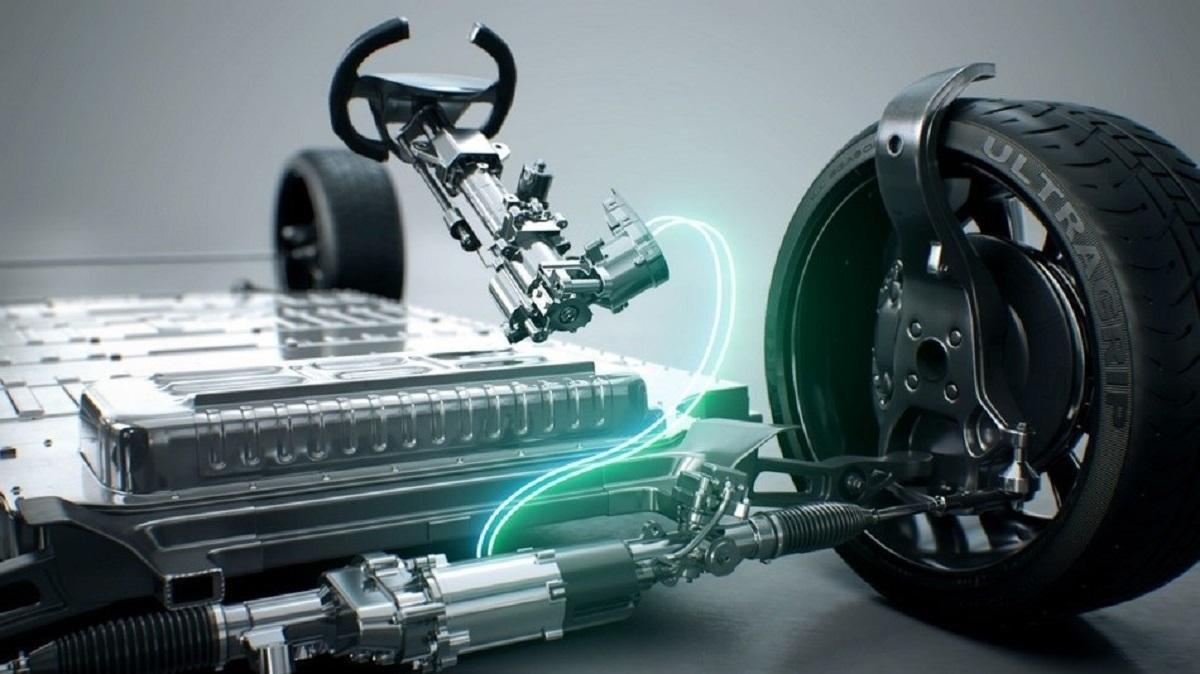What is Drive By Wire?
Drive By Wire, also known as x-by-wire, is an automotive technology that replaces traditional mechanical linkages with electronic systems.
It eliminates the need for physical connections between the driver's controls and the vehicle's components. Instead, electronic sensors and actuators are used to transmit signals, enabling control inputs to be translated into corresponding actions within the vehicle's subsystems.
Components of Drive By Wire System
The Drive By Wire system comprises several key components, including:
- Electronic Throttle Control (ETC): ETC replaces the conventional mechanical throttle linkage with electronic sensors and actuators. It precisely controls the throttle opening, improving engine response and fuel efficiency.
- Brake-by-Wire (BBW): BBW replaces the mechanical connection between the brake pedal and the braking system with electronic sensors and actuators. It offers enhanced braking performance and enables the integration of advanced safety features such as regenerative braking and autonomous emergency braking.
- Steer-by-Wire (SBW): SBW eliminates the mechanical linkages between the steering wheel and the wheels. It utilizes electronic sensors and actuators to control the steering inputs. SBW enables advanced steering features like lane-keeping assist and self-parking.
Advantages of Drive By Wire Technology
Drive By Wire technology offers several advantages over traditional mechanical systems:
- Improved Fuel Efficiency:By eliminating mechanical linkages, Drive By Wire reduces the weight of the vehicle, resulting in improved fuel efficiency.
- Enhanced Safety:Drive By Wire enables the integration of advanced safety features such as adaptive cruise control, lane departure warning, and collision avoidance systems, enhancing overall vehicle safety.
- Increased Vehicle Performance:The precise control offered by Drive By Wire enhances vehicle performance, providing better acceleration, handling, and responsiveness.
Challenges and Limitations of Drive By Wire
While Drive By Wire technology brings numerous benefits, it also faces certain challenges and limitations:
- Reliability Concerns:Electronic systems are susceptible to malfunctions, and any failure in the Drive By Wire system can lead to a loss of control over the vehicle. Ensuring robust reliability is crucial for widespread adoption.
- Cybersecurity Risks:With the increased reliance on electronic systems, Drive By Wire introduces new cybersecurity vulnerabilities. Protecting the system from potential cyber threats is of paramount importance.
- User Acceptance:Traditional mechanical systems have been trusted for decades, and the transition to electronic systems may face resistance from users who are skeptical about the reliability and safety of Drive By Wire technology.
Current Market Trends and Growth Drivers
The Drive By Wire market Size is experiencing significant growth, driven by various factors:
- Electric Vehicles (EVs):The rise of electric vehicles has propelled the demand for Drive By Wire systems. As EVs have fewer mechanical components, the integration of Drive By Wire technology becomes easier, enabling enhanced performance and efficiency.
- Autonomous Vehicles:Autonomous vehicles heavily rely on electronic systems for control and navigation. Drive By Wire plays a vital role in enabling precise control and coordination required for autonomous driving.
- Advanced Driver Assistance Systems (ADAS):ADAS features such as adaptive cruise control, automatic emergency braking, and lane-keeping assist rely on Drive By Wire technology. The increasing adoption of ADAS contributes to the growth of the Drive By Wire market.
Key Players in the Drive By Wire Market
The Drive By Wire market is highly competitive, with several key players leading the industry. Some notable companies operating in this market include:
- Company A: Company A is a renowned automotive technology provider known for its innovative Drive By Wire solutions and expertise in electronic control systems.
- Company B: Company B specializes in developing Drive By Wire systems for electric and autonomous vehicles. Their solutions focus on enhancing performance and safety.
- Company C: Company C is a leading manufacturer of Drive By Wire components, including electronic throttle control and steer-by-wire systems. They offer reliable and high-quality solutions to various automotive OEMs.
Regional Analysis
The Drive By Wire market Share exhibits regional variations in terms of adoption and growth. Key regions include:
- North America:The North American market has a strong presence of automotive manufacturers and technological advancements. It is a significant hub for Drive By Wire technology, driven by the demand for electric and autonomous vehicles.
- Europe:Europe is at the forefront of automotive innovation and has witnessed substantial adoption of Drive By Wire technology. Stringent emission regulations and the presence of major automotive OEMs contribute to market growth.
- Asia Pacific:The Asia Pacific region is experiencing rapid growth in the automotive industry, with countries like China and Japan leading the market. The increasing demand for electric vehicles and government initiatives to promote cleaner transportation drive the adoption of Drive By Wire technology.
- Rest of the World:Other regions across the globe are also witnessing a gradual adoption of Drive By Wire technology, driven by technological advancements and the pursuit of enhanced vehicle performance and safety.
Future Outlook and Opportunities
The Drive By Wire market is poised for significant growth in the coming years. Future developments and opportunities include:
- Technological Advancements:Ongoing research and development efforts aim to enhance the reliability, performance, and safety of Drive By Wire systems. Advancements in sensor technology, actuator design, and fault-tolerant systems will further drive market growth.
- Integration with AI and Machine Learning:The integration of Drive By Wire technology with artificial intelligence and machine learning algorithms opens up new possibilities for advanced vehicle control, intelligent decision-making, and predictive maintenance.
More Reports
Automotive LiDAR Sensors Market Size
Side Guard Door Beams Market Size
Automotive Structural Sheet Metal Market Size
